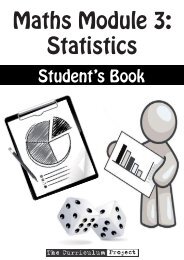Student's Book â Dec 2009 (5.9mb) - The Curriculum Project
Student's Book â Dec 2009 (5.9mb) - The Curriculum Project
Student's Book â Dec 2009 (5.9mb) - The Curriculum Project
You also want an ePaper? Increase the reach of your titles
YUMPU automatically turns print PDFs into web optimized ePapers that Google loves.
3. Colonialism and Independence3.1 INTRODUCTIONpreviewmap work,predictingbrainstormadvatangesanddisadvantagesA. Where are the Straits of Malacca? Place them on your map on page 33.B. Look at the title for this section. What do you think you will be studying?C. What do you know so far about the Straits of Malacca?D. What countries are situated on the Straits of Malacca?What could be some advantages and disadvantages of having a city on the Straitsof Malacca? Work in groups to complete this chart.AdvantagesDisadvantagesexercisecomprehensionRead the text and add anything else you can think of to the chart above.KEY WORDSbland (adj) – boring, without tastecamphor (n) – strong smelling white substance found in camphor laurel tree, used in medicinecinnamon (n) – a sweet spice used in cookingclove (n) – special dried flowers used as a spicehaul (v) – to transport something heavyisthmus (n) – a narrow strip of land between bigger pieces of landmace (n) – dry skin from nutmeg, also used as spicenutmeg (n) – a seed from a tree, very fragrant, used as spicepilgrim (n) – a person who travels to a sacred place for religious reasonsspoiled (adj) – not good to eat anymore<strong>The</strong> Straits of Malacca<strong>The</strong> calm waters of the Malacca Straits provided a relatively safe sea route between India andChina. Merchants, soldiers, pilgrims and scholars passed through the Straits, bringing theirgoods and their culture. <strong>The</strong> passage through the Straits was not fast but it was certain thanks tothe monsoon winds.Alternative Route<strong>The</strong> Southwestern monsoon winds are only active between June and September. As a result,ships from western Asia often did not go all the way to China. <strong>The</strong>ir goods were taken across theIsthmus of Kra in boats along rivers and on elephants through the jungle. When they arrived atthe eastern side of the isthmus, the goods were loaded on to other ships. <strong>The</strong> ships coming fromChina had to do the same in the opposite direction.Ports first grew up at the northern end of the Straits on the Isthmus of Kra (near modern dayKrabi and Phuket) where goods could be hauled overland to the China Sea. Later, ports appearedto the south on the coasts of Java and southeast Sumatra as ships from the west started goingfurther through the Straits of Malacca.Malacca became Southeast Asia’s busiest port, receiving ships from the Middle East, India,China and Indonesia. <strong>The</strong> Indonesian ships were the most important because they brought spicesfrom the Moluccas Islands, near New Guinea.36


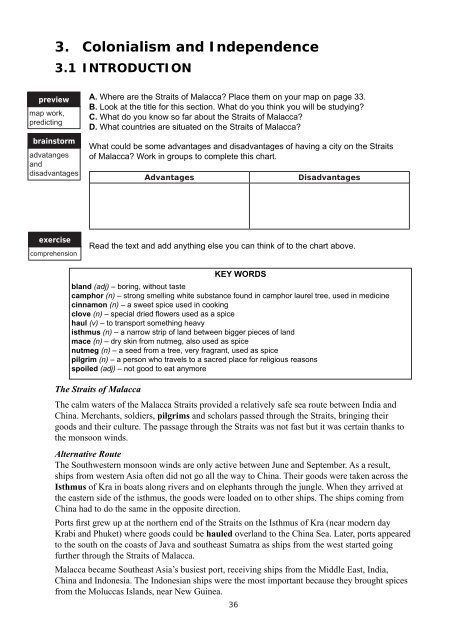
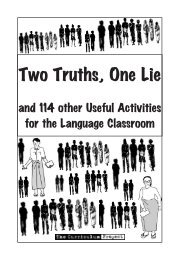
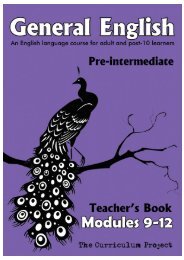



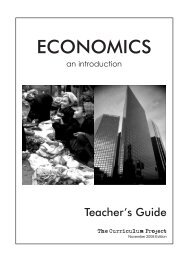
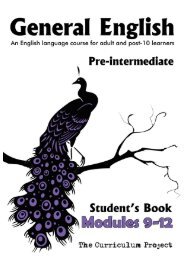


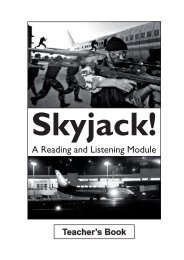
![[Eng] Nov 2012 DRAFT - The Curriculum Project](https://img.yumpu.com/45590859/1/184x260/eng-nov-2012-draft-the-curriculum-project.jpg?quality=85)


